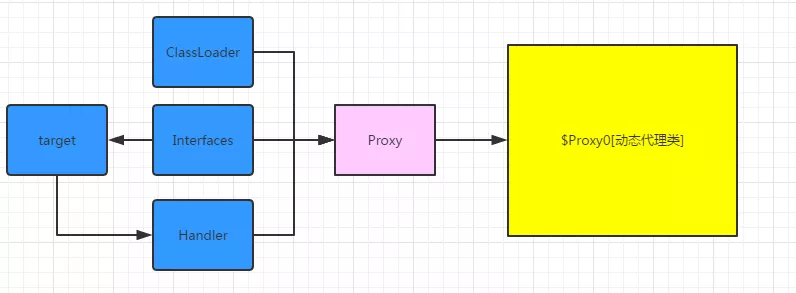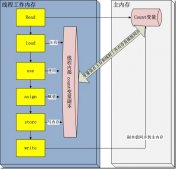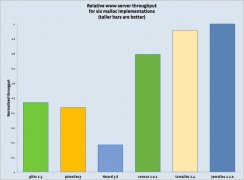本文实例讲述了JAVA流控及超流控后的延迟处理方法。分享给大家供大家参考。具体实现方法如下:
流控检查(每半秒累计,因此最小留空阀值只能做到每秒2条):
import java.util.Date;
import java.lang.Thread;
/**
* 流量控制
*
* @author chenx
*/
public class OverflowController {
private int maxSendCountPerSecend; // 该条链路上流控阀值
private Date sendTime = new Date();
private int sendCount = 0; // 该条链路上发送的数量
public OverflowController(int maxSendCountPerSecend) {
if (maxSendCountPerSecend < 2) {
maxSendCountPerSecend = 2;
}
this.maxSendCountPerSecend = maxSendCountPerSecend;
}
public int getMaxSendCountPerSecend() {
if (getMilliseconds(new Date()) >= 500) {
return maxSendCountPerSecend / 2;
}
return maxSendCountPerSecend - (maxSendCountPerSecend / 2);
}
/**
* 是否超流控
*/
public boolean isOverflow(int sendNum) {
synchronized (this) {
Date now = new Date();
if (now.getTime() - sendTime.getTime() >= 500) {
sendTime = now;
sendCount = sendNum;
} else {
if (sendCount + sendNum > getMaxSendCountPerSecend()) {
return true;
} else {
sendCount += sendNum;
}
}
return false;
}
}
/**
* 获取指定时间的毫秒数
*/
private int getMilliseconds(Date date) {
SimpleDateFormat df = new SimpleDateFormat("SSS");
return Integer.valueOf(df.format(date));
}
public static void main(String[] args) throws InterruptedException {
OverflowController oc = new OverflowController(50);
SimpleDateFormat df = new SimpleDateFormat("yyyy-MM-dd HH:mm:ss:SSS");
for (int i = 0; i <= 100; i++) {
if (oc.isOverflow(1)) {
System.out.println(i + "-isOverflow-" + df.format(new Date()));
} else {
System.out.println(i + "-sendOk-" + df.format(new Date()));
}
Thread.sleep(10);
}
}
}
超流控后的延迟处理,由于java中没有.net的“延迟委托”一说:
WaitHandle waitObject,
WaitOrTimerCallback callBack,
Object state,
int millisecondsTimeOutInterval,
bool executeOnlyOnce
)
Java下需实现一个简单的延迟队列:
import java.util.concurrent.TimeUnit;
public class DelayEntry implements Delayed {
private int count;
private long dequeuedTimeMillis; // 出队列时间
public int getCount() {
return count;
}
public void setCount(int count) {
this.count = count;
}
public long getDequeuedTimeMillis() {
return dequeuedTimeMillis;
}
public DelayEntry(long delayMillis) {
dequeuedTimeMillis = System.currentTimeMillis() + delayMillis;
}
@Override
public int compareTo(Delayed o) {
DelayEntry de = (DelayEntry) o;
long timeout = dequeuedTimeMillis - de.dequeuedTimeMillis;
return timeout > 0 ? 1 : timeout < 0 ? -1 : 0;
}
@Override
public long getDelay(TimeUnit unit) {
return dequeuedTimeMillis - System.currentTimeMillis();
}
}
public class DelayService {
public void run() {
DelayQueue<DelayEntry> queue = new DelayQueue<DelayEntry>();
DelayConsumer delayConsumer = new DelayConsumer(queue);
delayConsumer.start();
for (int i = 0; i < 100; i++) {
DelayEntry de = new DelayEntry(5000);
de.setCount(i);
System.out.println(System.currentTimeMillis() + "--------" + de.getCount());
queue.add(de);
}
}
class DelayConsumer extends Thread {
DelayQueue<DelayEntry> queue;
public DelayConsumer(DelayQueue<DelayEntry> queue) {
this.queue = queue;
}
public void run() {
while (true) {
try {
DelayEntry de = queue.take();
System.out.println("queue size=" + queue.size());
System.out.println(de.getCount());
System.out.println(System.currentTimeMillis());
} catch (InterruptedException e) {
e.printStackTrace();
}
}
}
}
public static void main(String[] args) {
DelayService ds = new DelayService();
ds.run();
}
}
希望本文所述对大家的Java程序设计有所帮助。














